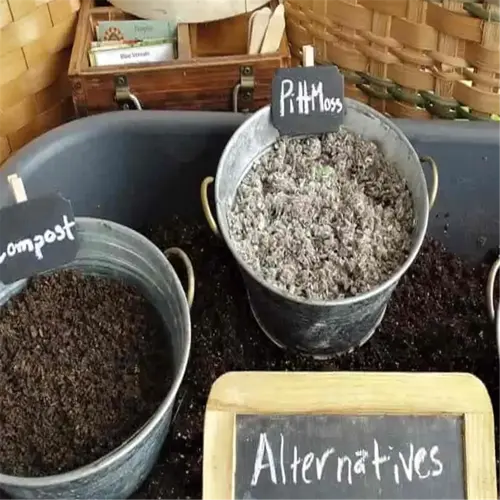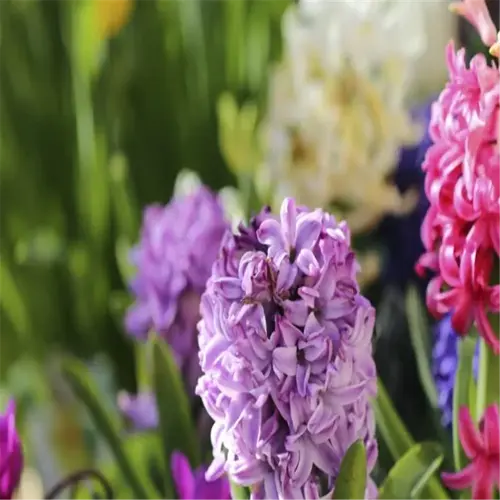12 Ways to Protect Plants from Frost: Expert Tips

Written by
Paul Reynolds
Reviewed by
Prof. Martin Thorne, Ph.D.Safeguard vegetation from frost with breathable materials and good insulation.
Water the soil 48 hours before a frost to improve heat retention.
Use three inches of organic mulch to insulate the root zones of plants.
For susceptible seedlings, place cold frames or cloches overnight.
Put plastic over burlap to reduce condensation freeze damage.
Monitor microclimates and frost forecasts to protect your plants.
Article Navigation
Understanding cellular damage is the first step in understanding how to protect plants against frost. As frost develops, ice crystals will form and puncture plant cell walls, causing leaves to either wilt or turn black. Even hardy plants can suffer if they remain frozen for too long.
When temperatures fall to between 32-36°F, light frost occurs which some perennials can withstand. Anything below 28°F is a hard freeze and that will cause tender annuals to all die. The stems will fall over as the water inside freezes and expands. I have watched Basil turn black overnight.
Concentrate your protective efforts on those crops first, tomatoes, basil, and seedlings. These have soft stems without any wood which serves as a type of insulation. Young roots can also freeze faster than an established plant can. Areas of risk also vary. For example, gardeners in Minnesota prepare for frost earlier than gardeners in Florida, but the risk is infrequent yet damaging.
Best Materials to Cover Plants
Frost cloth has a much better performance when it comes to its R-value. The R-value of frost cloth is 1.5 compared to burlap, which has an R-value of 0.8. Frost cloth is a lightweight fabric that acts as a heat trap while allowing air circulation. I have reused the same frost cloth for three seasons. The frost cloth maintains temperatures 4-6°F higher than uncovered plants when there is a sudden cold snap or extreme cold weather.
Materials that breathe prevent moisture from accumulating under covers. Frost cloth allows for up to 30% air exchange. Burlap breathes quite well with about 50% airflow but will lose insulation value once wet. Do not use plastic sheeting without layering over some type of fabric. Last winter (2022-2023), I lost some tomato seedlings from moisture condensation underneath plastic. The stems rotted within 48 hours.
The sizing is critical. Cover vegetation from the ground line to 12 inches above the plants. Use 3x3ft sheets for pepper plants. Wrap shrubs with 6x4ft. I cut a cover for my rosemary bush, and it flourished. Smaller plants freeze faster as the structure offers less insulation to protect the roots.
With proper handling, reusable options such as polypropylene frost blankets have a life of five seasons. Burlap has a two-season life. Cardboard boxes are disposable and are good for one frost event. Always punch holes for ventilation. During the early spring surprise frost, I line the cardboard boxes with newspaper for insulation.
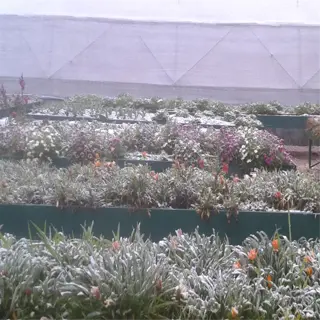
Frost Cloth
- Breathability: Allows air circulation while trapping 4-6°F (2-3°C) of ground heat
- Installation: Drape directly over plants without touching foliage
- Reusability: Machine-washable material lasts 5+ years with proper care
- Sizing: Use 10ft x 30ft (3m x 9m) rolls for vegetable beds
- Anchoring: Secure edges with rocks or landscape staples
- UV Protection: Some brands offer 30% UV blockage

Burlap
- Weight: Medium-weight fabric (8-10oz/yd²) blocks windchill effectively
- Drainage: Naturally porous material prevents water pooling
- Shaping: Form teepee structures around shrubs using stakes
- Limitations: Not suitable for temperatures below 25°F (-4°C)
- Maintenance: Air-dry completely before storage
- Eco-Friendly: Biodegradable jute material breaks down naturally
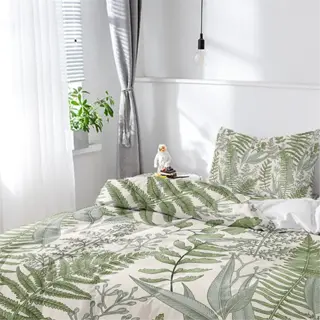
Bed Sheets
- Fabric Choice: Cotton retains 3-4°F (1-2°C) more heat than polyester
- Layering: Combine with newspaper for extra insulation
- Securing: Use clothespins to seal edges around plant bases
- Limitations: Remove immediately after sunrise to prevent overheating
- Maintenance: Wash with mild detergent between uses
- Cost: Most budget-friendly reusable option
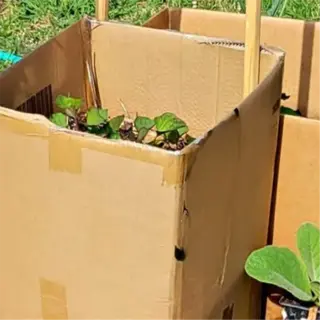
Cardboard Boxes
- Insulation: Traps 5-7°F (3-4°C) of heat in still-air space
- Setup: Cut ventilation holes to allow minimal airflow
- Moisture Control: Line interior with plastic for wet climates
- Limitations: Only effective for 6-8 hours of continuous use
- Disposal: Recycle wax-coated boxes separately
- Customization: Fold flaps inward to create snug fit
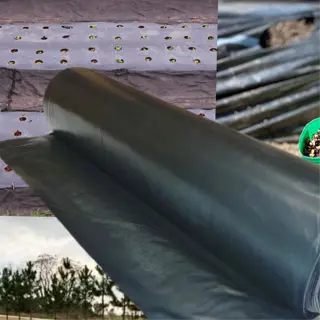
Plastic Sheeting
- Layering Requirement: Always use over breathable fabric like burlap
- Condensation Risk: Creates 100% humidity under sheet if used alone
- UV Rating: 6-mil thickness blocks 90% of sunlight
- Anchoring: Bury edges 2-3 inches (5-7.5cm) in soil
- Limitations: Remove during daytime above 50°F (10°C)
- Combination Use: Pair with Christmas lights for radiant heat
Preparing Soil and Plants for Frost
The moisture in the soil uses capillary action to pull warmth up towards the ground surface. Moist soil will keep the root zone 2-3°F warmer than dry ground. Water your plants thoroughly at least 48 hours before frost is expected. The moisture in the top layer of soil has a better chance of holding heat and will slowly release that heat overnight. I have had success using moist soil to save carrots when an unexpected early frost rolled in.
Organic mulch, such as straw, is approximately 2.0 R-value per inch. Inorganic gravel is only 0.5. Spread 3 inches of shredded leaves around roses. Don't use fresh manure. My kale, with mulch last fall, survived 25°F, while un-mulched plants froze solid.
Hilling helps safeguard potato tubers and carrot crowns. After the first frost, mound soil up to 6 inches around the stems. Be sure to angle the slopes outward to shed water. My hilled parsnips were harvestable throughout the winter. Root crops will store their sugars better with this protection.
Only water the soil when temperatures are consistently above 40°F. Too cold of a water temperature can chill roots below this threshold. A soil thermometer is helpful for this purpose. Measure the temperature at a depth of 2 inches, next to the stems of the plants. When watering young beans I lost last year, I watered at 38°F. Leaves on the young beans started to yellow within a few days.
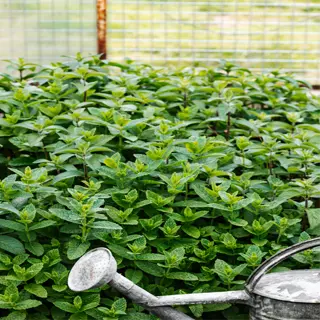
Watering Can
- Capacity: 2-gallon (7.5L) models ideal for deep soil saturation
- Nozzle Type: Rain shower head prevents soil compaction
- Timing: Water at 55°F (13°C) air temperature for optimal absorption
- Soil Depth: Moisture should reach 6-8 inches (15-20cm) depth
- Frequency: Single heavy watering better than multiple light sessions
- Temperature Impact: Raises soil temp 2-3°F (1-2°C) for 72hrs
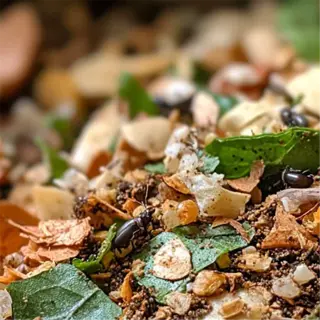
Mulch Materials
- Best Types: Straw (R-value 1.5), shredded bark (R-value 2.0)
- Application: 3-inch (7.5cm) layer around plant bases
- Avoid: Fresh manure (burns plants)
- Renewal: Replace every 4-6 weeks in wet climates
- Drainage: Slope mulch away from stems to prevent rot
- Cost: $3-$5 per cubic foot at garden centers
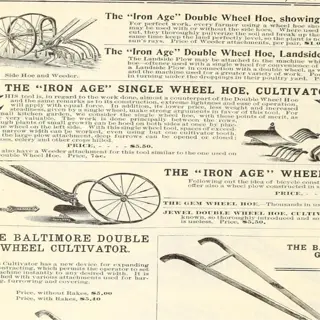
Hilling Tools
- Blade Width: 8-inch (20cm) hoes create optimal mounds
- Angle: 45-degree slopes shed excess moisture
- Height: 6-8 inch (15-20cm) hills protect root crowns
- Timing: Hill plants when 12-18 inches (30-45cm) tall
- Materials: Use well-draining sandy loam soil
- Maintenance: Smooth mounds after heavy rain
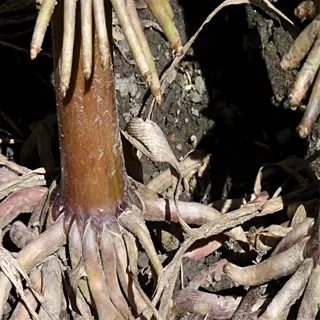
Root Zone Covers
- Material: Burlap (8oz/yd²) allows 50% air flow
- Size: 24x24 inch (60x60cm) squares for mature plants
- Installation: Secure with landscape pins every 12 inches (30cm)
- Duration: Leave until last frost date passes
- Monitoring: Check weekly for pest activity
- Reusability: 3-5 seasons with proper storage

Fertilizer Alternatives
- Compost Tea: Apply 1gal/yd² (4L/m²) monthly
- Kelp Extract: Boosts cold tolerance at 2oz/gal (60ml/4L)
- Timing: Stop nitrogen-rich feeds 6 weeks pre-frost
- pH Balance: Maintain 6.0-6.5 for nutrient uptake
- Winterizers: High-potassium mixes (15-5-30 NPK)
- Application: Side-dress 4-6 inches (10-15cm) from stems
Indoor and Outdoor Protection Methods
Thermal curtains offer R-3 insulation versus bubble wrap's R-1.2. During extreme cold, I use thermal curtains to line the windows. While bubble wrap will work and trap heat for a short duration of time, it retains moisture. Last January, my citrus seedlings survived -5°F underneath layered thermal curtains, but the temperature was still below freezing under bubble wrap curtains.
Locate cold frames at a true south exposure at a 15° angle. This exposes them to the winter sun at the maximum angle possible. My spinach did well in a frame I placed 3 feet from a white wall. The reflected light gave them an extra 2 hours of warmth daily.
Heat lamps for outdoor use require GFCI outlets at 120V. I use 250W bulbs for 50 sq ft coverage. I protect my potted lemon tree with a 250W lamp fixed to the wall at 4ft height. Never use cords rated for indoor use because they fail below 20F.
Windbreaks require height to distance ratio of 1:10. Thus, a 6ft fence will protect about 60ft downwind. My arborvitae hedge was established to block northwest winds that chill the vegetable patch. For best results, cluster a few rows of plants spaced 15ft apart. A dense planting reduces wind speed by approximately 75% in the protected area.
Thermal Curtains
- R-Value: Minimum R-3.5 for frost protection below 45°F (7°C)
- Installation: Hang 2-4 inches (5-10cm) away from windows
- Timing: Close at sunset, open at 10 AM
- Best For: Fiddle leaf figs, Meyer lemon trees
- Cost: $25-$40 per 6ft (1.8m) curtain
Cold Frames
- Materials: Use twin-wall polycarbonate (4mm thickness)
- Orientation: Face south with 15° slope
- Ventilation: Prop open 6 inches (15cm) when above 40°F (4°C)
- Crops: Spinach, kale, winter lettuce
- Maintenance: Clean polycarbonate monthly with vinegar solution
Outdoor Heat Lamps
- Wattage: 250W ceramic bulbs cover 50ft² (4.6m²)
- Height: Mount 4-5ft (1.2-1.5m) above plants
- Safety: GFCI outlets required for wet conditions
- Runtime: Operate 6PM-8AM during freezes
- Bulb Life: 5,000-hour average lifespan
Windbreak Fencing
- Density: 50% permeable barriers reduce wind by 75%
- Height: 8ft (2.4m) fences protect 80ft (24m) downwind
- Materials: Red cedar lasts 15+ years untreated
- Placement: 10ft (3m) from protected plants
- Installation Time: 4-6 hours for 8ft (2.4m) sections
Cloche Systems
- Venting: Automatic openers activate at 65°F (18°C)
- Materials: UV-stabilized polycarbonate (10yr warranty)
- Size: 24-inch (60cm) diameter suits mature brassicas
- Anchoring: Sandbags prevent tip-overs in 35mph (56km/h) winds
- Cost: $45-$75 per unit
Effective Covering Techniques
Layered coverings retain 6-8°F greater temperature than a single material. I use a combination of frost cloth and burlap over my tomato plants and it kept them alive at 22°F last spring! Single sheets provided only 2-3°F of protection. Edge seams should always be overlapped by 12 inches to reduce drafts.
Set up 18" spacers around the plant. Angle the spacers outward at 45 degrees to create an air pocket. I used this pattern for my pepper bed and it survived a heavy frost. The space in between plants creates space where warmer air may collect, which reduces the likelihood of condensation. Do not use vertical stakes or they will collapse under the weight of the fabric.
Uncover plants when the temperature is 38°F or warmer. Covers left on past this point will trap damaging humidity underneath, where that is most damaging to the tender leaves. I usually check my thermometer first thing in the morning. If it is above freezing but below 38°F, I will crack one side to get air movement. Sudden exposure to colder air temperatures can be shocking for tender leaves.
Delicate seedlings can only withstand a maximum of 0.5 lbs of pressure per square foot. It's best to use floating row covers instead of heavy burlap for new sprouts. I'll share a story of how I lost a couple dozen lettuce starts last fall when I put them under weighted blankets. The pressure was too much, and the stems snapped. If you live in an area with heavy snow, you can weigh down your covers with hoops for added reinforcement.
Frost Cloth Setup
- Breathability: Allows 30% air exchange while retaining humidity
- Staking: Space bamboo poles 18 inches (45cm) apart
- Sizing: Cut 12 inches (30cm) wider than plant diameter
- Anchoring: Use landscape pins every 24 inches (60cm)
- UV Protection: 50+ UPF rating prevents daytime degradation
Burlap Installation
- Layering: Double-wrap shrubs in <25°F (-4°C) conditions
- Tying: Secure with jute twine at 3 points minimum
- Drainage: Elevate bottom 6 inches (15cm) above soil
- Duration: Maximum 72 continuous hours
- Maintenance: Brush off snow accumulations >2 inches (5cm)
Plastic Sheeting Rules
- Spacing: Maintain 4-inch (10cm) air gap above foliage
- Venting: Create 6-inch (15cm) ground-level openings
- Thickness: 6-mil minimum for wind resistance
- Timing: Remove when temps exceed 45°F (7°C)
- Safety: Never allow direct plant contact
Cloche Management
- Venting: Prop open 1 inch (2.5cm) during daylight
- Weighting: Use 5lb (2.3kg) weights per square foot
- Placement: Shift daily to prevent soil compaction
- Cleaning: Disinfect weekly with 10% vinegar solution
- Storage: Stack vertically in dry area
Emergency Blankets
- Reflectivity: 90% heat reflection for sudden cold snaps
- Layering: Place over burlap never directly on plants
- Sealing: Bury edges 3 inches (7.5cm) deep
- Duration: Maximum 12-hour continuous use
- Caution: Remove before direct sunlight exposure
Cold-Hardy vs. Tender Plants
Cold-hardy plants such as kale and pansies make antifreeze proteins, so ice crystals don't form. Tender plants, however, do not have this adaptation. At temperatures below freezing, the cell membranes rupture. A case in point is my broccoli, which survived 18°F last winter while the basil next to it turned into a soft mess in just a few hours. This is a matter of cellular biology.
Planting options are guided by USDA zones. Kale does well in zones 2-11. Tomato plants need zones 5-9. Whatever decisions we make about ornamentals, be sure to know what your zone is. I have a zone 6 garden that fits Russian sage, but bougainvillea, no way! Always confirm plant tags and local frost dates to avoid making mistakes!
Plants that are frost tolerant can endure ice within their cells, while frost-resistant cultivars, like conifers, completely avoid freezing. I grow Siberian iris that are frost tolerant and can endure temperatures down -30°F through sugar-rich sap. On the other hand, tender impatiens die at temperatures below 33°F. Resistance mechanisms dictate whether plants endure cold damage or avoid it altogether.
Microclimates change hardiness zones. South-facing walls provide heat. Valleys and depressions can hold cold air. My rosemary is next to a stone patio, where the rocks store heat from the sun during the day. Elevation makes a difference too! Temperatures fall 3°F for every 300 feet in elevation gained. Pay attention to those little pockets of hidden landscape!
Root Vegetables
- Hardiness: Survive 20°F (-7°C) with proper mulching
- Soil Prep: Maintain pH 6.0-6.8 for optimal cold tolerance
- Harvest: Leave in ground until needed
- Mulching: 6-inch (15cm) straw layer
- Varieties: 'Winterkeeper' beets, 'Merlin' carrots
Leafy Greens
- Frost Protection: Use 30% shade cloth during hard freezes
- Watering: 1 inch (2.5cm) weekly until ground freezes
- Succession Planting: Sow every 14 days in fall
- Best Varieties: 'Winterbor' kale, 'Rouge d'Hiver' lettuce
- Pest Control: Apply diatomaceous earth pre-frost
Flowering Perennials
- Acclimation: Reduce watering 6 weeks pre-frost
- Pruning: Leave dead foliage as insulation
- Hardy Choices: Coneflowers, Sedum 'Autumn Joy'
- Container Plants: Move to unheated garage at 25°F (-4°C)
- Root Protection: Mound 12-inch (30cm) soil base
Tropical Fruits
- Critical Temp: Protect below 50°F (10°C)
- Light Requirements: 12hr/day grow lights indoors
- Humidity: Maintain 60-70% with pebble trays
- Pruning: Remove 30% foliage pre-winter
- Hardening Off: 2-week outdoor acclimation in spring
Summer Vegetables
- Sensitivity: Damaged at 33°F (1°C) for 4+ hours
- Row Covers: Use 1.5oz/sq yd (50g/m²) frost cloth
- Harvest Promptly: Pick all fruit before first frost
- Soil Solarization: Kill pathogens during dormancy
- Companion Plants: Marigolds deter cold-stress pests
5 Common Myths
All plants always need frost protection when temperatures dip below freezing.
Cold hardy plants, like kale, (and conifers) require frost exposure to fully develop flavor and hardiness. Protecting these plants wastes valuable resources, and disrupts their natural cold acclimation and adaptation processes. Only tender plants whose can be damaged below 32 degrees F (0 degrees C) require protection.
Plastic sheeting alone provides sufficient frost protection for tender plants.
Plastic creates dangerous condensation, only slightly warmer (R-value 0.87), trapping damaging condensation. Plastic must be layered, laid over any breathable fabric (burlap, natural canvas, etc.) with 2-4 inches (5-10cm) of air gap. When used alone, plastic increases the risk of frost damage, by creating dangerous ice layers.
To prevent freezing damage to plants during frost events, it is best to avoid watering them until the frost passes.
Watering plants during frost events causes ice crystals to form directly on the foliage, rupturing the plant cells. Watering the soil 24-48 hours before frost (to allow the soil to dry) is good to do, as moist soil holds 2-3F (1-2C) more heat than dry soil.
Plants killed by frost should be pruned as soon as possible to spur regrowth.
Pruning too soon exposes tender tissue to additional freezing. Damaged leaves shield the stems beneath from harm for 2-3 weeks after the frost. Hold off on pruning until day time temperatures float above 50°F (10C), at which point you can easily remove the blackened foliage with sterilized shears - preferably cut at a 45° angle.
Commercial anti-transpirant sprays offer the same protection as physical covers.
Although moisture loss is reduced by 30-40% through these polymer-formed sprays, the frost tolerance is only raised by 1-2F (0.5-1C); whereas a physical cover consistently maintains 4-8F (2-4C) above ambient for the canopy temperatures. For plants in transitional climate zones, then both anti-transpirant sprays and physical covers can be combined.
Conclusion
Proactive planning is the difference between a flourishing garden and one that's been devastated by frost damage. Start preparing for cold weather about two weeks before your average first frost date for your area. Have your extra cover, stakes, and thermometer as a collection that is easily accessible. I keep mine near the backdoor for quick access in case the forecast calls for temperatures to drop below 38°F.
Keep an eye on temperatures every day during both the fall and spring months. To keep track of two micro-climates, I have wireless sensors that monitor the temperature. In the fall, my south-facing beds require protection 10 days after the north-facing beds. It's important to refresh our protective strategy every week as daylight shrinks. Each year, I take notes on the frost dates so I can change the pattern in case it threatens plant hardiness.
Creatively reuse materials. For example, old curtains become tomato tents and burlap coffee sacks can be used to shield shrubs from cold. I even reused PVC pipes into a frame for protecting gardens for the last five seasons! I also wash frost cloth with vinegar to help prevent molds and mildew from growing. Sustainable practices help you save money on non-disposable covering options for your garden while keeping large quantities of disposable covering from the landfill.
Prepare different methods to suit your climate. Gardeners in desert areas concentrate on radiative frosts. Coastal gardeners face wet and cold. My garden, Zones 5 has to deal with by putting covered, buried hay bales around the roses. A friend in Florida swears by planting palm fronds in teepee formations. Consider what may be going on in your local conditions and make the adjustments using natural yard indicators, like migrating birds or changing leaf color for example.
External Sources
Frequently Asked Questions
What materials work best for frost protection?
Breathable fabrics like frost cloth or burlap allow air circulation while trapping heat. Avoid non-breathable plastics unless layered over fabric. Materials must extend to the ground and be secured against wind.
Is watering plants before frost beneficial?
Watering soil 24-48 hours before frost helps retain heat, as moist earth releases warmth 2-3°F higher than dry soil. Avoid wetting foliage directly, as ice crystals damage plant cells.
How long should plants stay covered?
Remove covers when temperatures rise above freezing during daylight. Prolonged coverage beyond 48 hours risks:
- Humidity buildup promoting fungal growth
- Light deprivation stunting photosynthesis
- Trapped heat stressing plants
Can household items replace frost blankets?
Emergency alternatives include:
- Bed sheets (double-layered)
- Cardboard boxes with ventilation holes
- Baskets lined with newspaper
- Avoid plastic bags unless over cloth
What temperature triggers plant frost damage?
Most tender plants suffer damage below 32°F (0°C), but cold-hardy varieties tolerate lower temps. Microclimates near structures or under tree canopies often stay 5°F warmer than open areas.
Do all plants need frost protection?
Prioritize protection for:
- Tropical species (hibiscus, citrus)
- Seedlings and new transplants
- Blooming/fruiting plants
- Vegetables like tomatoes and peppers
How does mulch prevent frost damage?
A 3-inch mulch layer insulates roots by slowing soil heat loss. Use organic materials like straw or shredded bark, keeping it 2 inches from stems to prevent rot.
Can plants recover from frost exposure?
Wait 2-3 weeks before pruning damaged foliage. Healthy plants often regrow from protected buds. Remove blackened leaves only after new growth appears to avoid secondary frost injury.
Are commercial frost sprays effective?
Anti-transpirant sprays provide 1-2°F protection by reducing moisture loss. They work best combined with physical covers and require reapplication after rain or heavy dew.
Why avoid plastic-only plant covers?
Plastic causes condensation that freezes on foliage, worsening damage. Use only as a top layer over breathable fabric, ensuring air gaps. Remove completely during daylight to prevent overheating.
